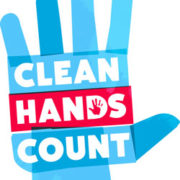
EMERGENCY PREPAREDNESS THEME
Emergency Preparedness is one of our Accreditation 2018 Quality and Safety themes. It focuses on ensuring that Menno Place services and staff are prepared for emergencies and that an effective disaster response system in place. Although there are no Required Organizational Practices (ROPs) in this theme, it contains a number of high priority standards concerning staff and resident/patient safety. This theme covers four components of our organization’s emergency management processes, infrastructure and plans, including:
- Emergency Colour Code Response Plans
- Disaster Response Plans
- Fire Safety Plans
- Pandemic Plans (i.e. H1N1)
Quality and Safety Themes
In addition to Emergency Preparedness, the other Quality and Safety themes we have reviewed to date at Menno Place are:
- Infection Prevention and Control Theme – Reduce the risk of health care associated infections and their impact across the care continuum.
- Safety Culture Theme – Create a culture of safety.
Our remaining themes which we will review before our October 2018 survey include:
- Work life/Workforce Theme – Create a work life and physical environment that supports the safe delivery of care/service.
- Communication Theme – Improve the effectiveness and coordination of communication among care/service providers and among our recipients of care/service.
- Ethics Theme – Ensure processes are in place to support resident/patient safety efforts related to ethics, privacy and data management.
- Medication Use Theme – Ensure the safe use of high-risk medications.
- Risk Theme – Identify safety risks inherent in our resident/patient population.
Meeting Our Emergency Preparedness Priorities
The Emergency Preparedness theme covers emergency response plans, disaster plans, fire safety plans and pandemic outbreak plans. Ensuring everyone is familiar with these plans helps us adequately care for staff, residents and visitors in the event of an emergency.
Menno Place has detailed disaster response plans that provide guidance and instruction for identifying, activating and managing all levels of response situations.
- EMERGENCY RESPONSE PLANS
Menno Place uses two main systems for identifying and responding to emergency situations: Emergency Colour Code Response Plans and the Emergency Command Centre.
Through our Emergency Colour Code Response Plans, we identify and respond to emergency situations using the resources at hand. For more complex emergencies, we activate our Emergency Command Centre to coordinate and manage response requirements.
Emergency Colour Code Response System
Menno Place uses a standardized colour code system to declare and respond to emergencies such as hazardous spills, evacuations, fires or missing residents. The colour codes allow people to convey essential information quickly and clearly, and to help prevent stress among residents and visitors. There are nine codes in total.
Our colour codes are:
- Code Blue: Medical Emergency (can include cardiac arrest)
- Code White: Aggressive/Violent Act
- Code Red: Fire
- Code Yellow: Missing Resident
- Code Brown: Hazardous Spill
- Code Black: Bomb Threat
- Code Green: Evacuation
- Code Orange: Disaster/Mass Casualty
- Code Grey: Air Exclusion
For each emergency colour code, Menno Place has response protocols. Together, the colour codes and their associated protocols form our Emergency Colour Code Response system that provides us with guidelines for responding to a variety of situations. The Emergency Colour Code Response procedures are available in a number of formats throughout our organization including:
- Binders – a manual book with the comprehensive colour code emergency response procedures that include step by step guidelines, as well as a one page quick reference sheet.
- Wallet size stickers – colour code stickers are available to be attached to the back of your security ID badge for quick reference.
- Flip chart – emergency response plan flip chart that provides a more detailed quick reference of managing emergencies.
- Sharepoint – an electronic repository of the emergency response procedures found in the binders.
Isolated or small internal emergencies can be managed with the resources on site and response protocols are outlined according to the colour code protocols. A colour code situation can quickly escalate and may require additional resources. In some cases, it may become so complex that it requires activation of the Emergency Command Centre. Menno Place has a system to practice responses to these colour codes.
Emergency Command Centre
If an event is beyond an employee and/or the work area’s ability to manage, a Command Centre may be activated. Through the Emergency Response structure, the Command Centre is established to manage large, complex events that may require additional resources and coordination. Specifically the Command Centre provides:
- Policy and management support and direction
- Information collection, evaluation and display
- Coordination of site services
- Priorities and objective setting
- Resource management
- Communications
- Information and warnings
Activating a Command Centre
The Chief Safety Officer or delegate has the authority to activate a Command Centre and to direct the use of staff for emergency response. The Chief Safety Officer on site works with external partners such as first responders, local authorities, utility companies and government as needed.
- DISASTER RESPONSE PLANS
Menno Place has put a number of measures in place to support staff and residents through a disaster including disaster response plans, supplies, specialized resources and drills.
Preparing for a Disaster
Employees should be familiar is our Emergency Response Plan which includes planning for a disaster such as an earthquake.
To ensure you are prepared you should know:
- The location of your department’s emergency supplies
- The location of the site Command Centre
- Your department responsibilities in an event
- Any specific duties assigned to you or which may be assigned to you
- That your contact information in payroll is correct for fan-out
- Designated disaster routes to your workplace
- What your personal or family preparedness plan is
Employee Fan-Out Lists
Staff call back lists (Fan Outs) are in place in the event that we may require assistance when you are off duty or unscheduled. Fan Out lists are accessible for leaders to activate from outside the workplace.
Disaster Supplies
Disaster supplies are available in different locations on campus. Please ask your supervisor where they are at your site. Supplies include:
- Food and Water
- Search and Rescue items (hard hat, reflective vest, flashlights, candles, masks, etc.)
- First Aid
- Site Maps
Disaster Response Routes
Within the Lower Mainland, there is a network of pre-identified roads that will be used to move emergency supplies and services in the event of a major incident such as an earthquake. These routes are deemed priorities for clearing of debris so emergency vehicles and responders can gain access to impacted areas. Staff need to show their Menno Place picture ID security badge to access these routes.
Personal Preparedness
Just as every employee and department should know how to mitigate the consequences of a disaster and where to go for support, so should you and your family. Among other things you should:
- Ensure you have critical supplies that will last 72 hours
- Have an out of town contact
- Have a family meeting place
- Know your neighbours
- FIRE SAFETY PLANS
Menno Place has a fire safety plan that is approved by the municipal fire department. Our fire safety plans include information about how to prevent, mitigate and respond to fires. They outline what to do in the event of a fire or fire alarm, how to use a fire extinguisher, general evacuation procedures and other fire safety information. We practice fire drills monthly.
Discovery of smoke or fire
In the unlikely event smoke or fire is discovered, staff should follow the ICE process. ICE stands for Investigate, Communicate, Evacuate.
- Investigate what is going on. What and where is the hazard?
- Activate the fire alarm and designate emergency call centre to call 911
- Move everyone away from hazard past fire doors or into another unit.
Responding to a fire alarm
If you hear the fire alarm or Code Red announcement the process is:
- Report to a nursing unit (use stairs not elevators)
- Check your work area for signs of smoke or flames
- Check fire panels for location of fire or listen for announcement
- Reassure residents and visitors
- Direct residents and visitors to stay in their rooms or a safe area
- Ensure hallways are unobstructed
- Prepare residents for evacuation
- Know where gas shut off (or oxygen shut offs) are located
- Provide direction to fire responders
- Know exit routes from work area
Evacuating or Relocating Due to Fire
All sites have an established Code Green procedure for evacuation. In the event of a Code Green due to fire staff should:
- Evacuate residents, staff and visitors from a danger area
- Move horizontally through a set of fire separation doors, moving from a danger area to a safe area
- If danger persists, move horizontally again
- Move vertically to a lower floor if there are no safe horizontal routes
- Move out of the building if necessary and gather at the pre-planned location for your site.
- PANDEMIC PLANS
Pandemic Planning is part of our overall emergency preparedness plan. We follow pandemic protocols set by the health authority and the provincial government. We work with our partners in the health authority and other residential care homes on pandemic preparedness.
HOW WILL OUR EMERGENCY AND FIRE SAFETY PREPAREDNESS BE EVALUATED?
Surveyors will tour Menno Place and will gather information by:
- Reviewing documentation such as policies and fire drill records
- Talking and listening to leaders, staff, students, volunteers, residents and families
- Observing what takes place
- Recording what they read, see and hear
YOUR ROLE
During the on-site survey, surveyors will tour Menno Place and speak to staff, residents, students, volunteers, and family members. You may be interviewed and/or observed as surveyors gather information about how we plan for emergencies. Please ensure you take the time to review the location of emergency response supplies, location, binders and information. Prepare yourself by thinking through some of the questions that a Surveyor may ask you prior to the survey. Questions may include:
- Is there a plan for staff response in the event of an emergency or disaster?
- How are you trained?
- Have you participated in any drills or exercises?
- Are debriefings held following drills or exercises to identify areas to improve?
- When was the last fire drill you participated in?
- Are you aware of any exercises to test the Evacuation Plan?
If you have any questions, please ask your manager. If you are asked a question but you do not know the answer, please feel free to refer the surveyor to the appropriate person in your work area or to your supervisor.






 It’s time once again to BEE Prepared!
It’s time once again to BEE Prepared!